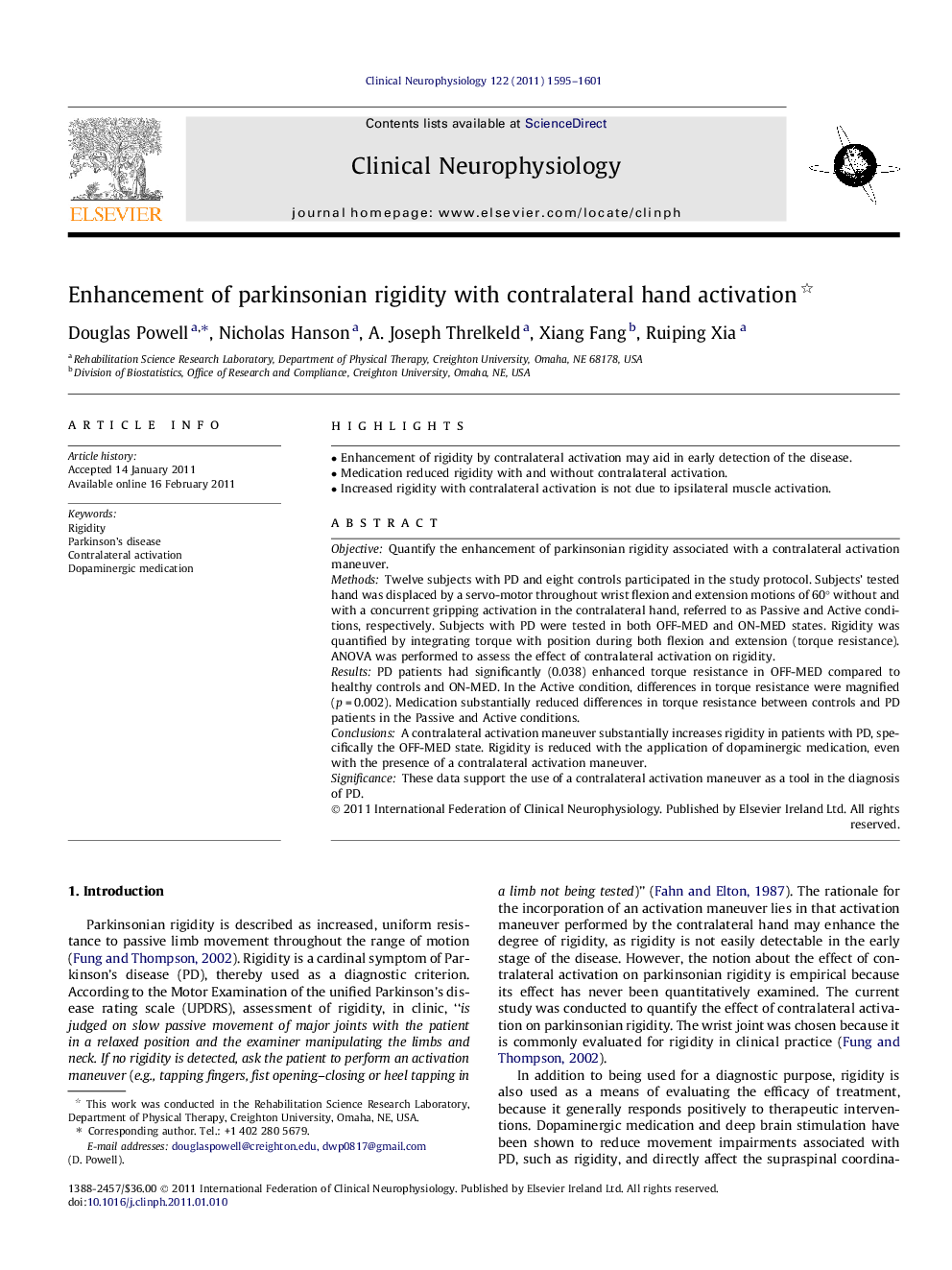| Article ID | Journal | Published Year | Pages | File Type |
|---|---|---|---|---|
| 3044024 | Clinical Neurophysiology | 2011 | 7 Pages |
ObjectiveQuantify the enhancement of parkinsonian rigidity associated with a contralateral activation maneuver.MethodsTwelve subjects with PD and eight controls participated in the study protocol. Subjects’ tested hand was displaced by a servo-motor throughout wrist flexion and extension motions of 60° without and with a concurrent gripping activation in the contralateral hand, referred to as Passive and Active conditions, respectively. Subjects with PD were tested in both OFF-MED and ON-MED states. Rigidity was quantified by integrating torque with position during both flexion and extension (torque resistance). ANOVA was performed to assess the effect of contralateral activation on rigidity.ResultsPD patients had significantly (0.038) enhanced torque resistance in OFF-MED compared to healthy controls and ON-MED. In the Active condition, differences in torque resistance were magnified (p = 0.002). Medication substantially reduced differences in torque resistance between controls and PD patients in the Passive and Active conditions.ConclusionsA contralateral activation maneuver substantially increases rigidity in patients with PD, specifically the OFF-MED state. Rigidity is reduced with the application of dopaminergic medication, even with the presence of a contralateral activation maneuver.SignificanceThese data support the use of a contralateral activation maneuver as a tool in the diagnosis of PD.
► Enhancement of rigidity by contralateral activation may aid in early detection of the disease. ► Medication reduced rigidity with and without contralateral activation. ► Increased rigidity with contralateral activation is not due to ipsilateral muscle activation.
